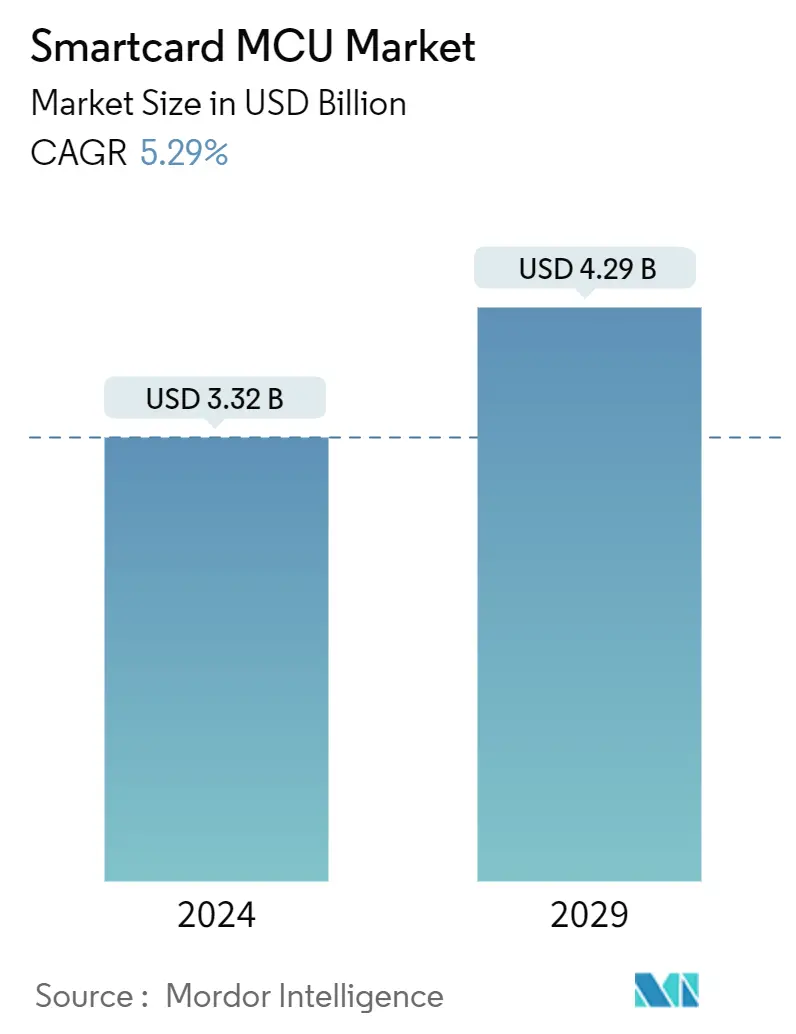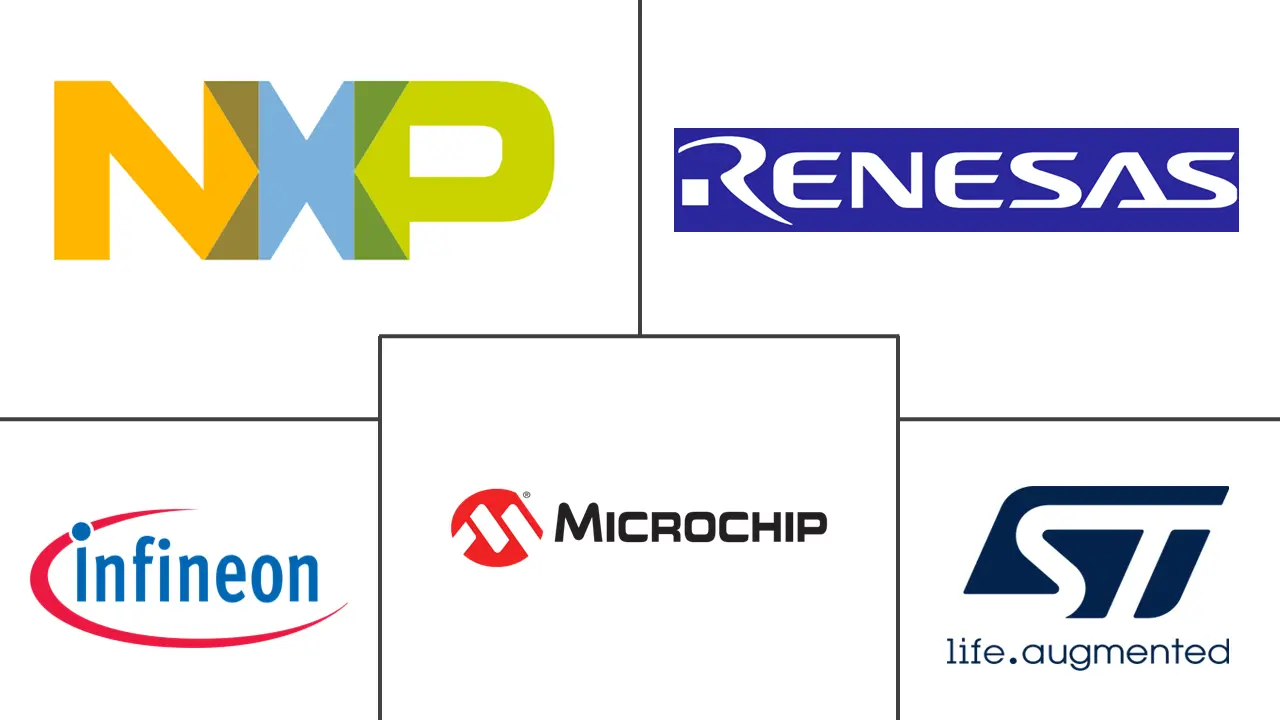Market Size of Smartcard MCU Industry

| Study Period | 2019-2029 |
| Market Size (2024) | USD 3.32 Billion |
| Market Size (2029) | USD 4.29 Billion |
| CAGR (2024 - 2029) | 5.29 % |
| Fastest Growing Market | Asia Pacific |
| Largest Market | Asia Pacific |
Major Players
*Disclaimer: Major Players sorted in no particular order |
Need a report that reflects how COVID-19 has impacted this market and its growth?
Smartcard MCU Market Analysis
The Smartcard MCU Market size is estimated at USD 3.32 billion in 2024, and is expected to reach USD 4.29 billion by 2029, growing at a CAGR of 5.29% during the forecast period (2024-2029).
- The Internet's rapid expansion has made electronic shopping a real possibility among computer users if not a habit; nevertheless, the present business model used in electronic commerce applications cannot fully exploit the potential of the electronic medium.
- The market growth is driven by the increasing development in RFID technology and NFC in smart cards. Contactless smart cards, leveraging the rapid evolution of radio frequency identification (RFID) technology, are gaining popularity. These cards use RFID technology to process transactions. Key vendors are concentrating on introducing contactless smart cards due to their growing consumer demand, which is expected to fuel market growth.
- The proliferation of smart card technology in the transportation industry, along with growing government investments in implementing digital technology, drives market growth. Electronic smart cards are now viable alternative payment methods for transport operators. In recent years, many operators and system providers have initiated smart card-based systems either to complement or replace existing payment methods.
- Furthermore, security and miniaturization represent the two fastest-evolving aspects of smart card technology. With global migration to higher security EMV banking cards, the newest generation of smart cards boasts full on-chip cryptography, significantly enhancing industry-wide card security. Moreover, smart cards are increasingly being miniaturized into diverse form factors like mini-tags and smart wearables. These trends will persist as smart cards are increasingly employed as a two-factor credential alongside phones or biometrics.
- The primary challenge facing smart cards is their security level. To realize their full potential, smart cards must interact with various interfaces. However, a security issue arises concerning public perception; people might need to be made aware of the personal details stored on their cards, assuming they are secure. Yet, there needs to be an awareness that information extracted from smart cards is collected and analyzed elsewhere.
- Additionally, the COVID-19 pandemic accelerated the adoption of contactless smart cards, driven by government and World Health Organization advocacy to prevent the spread of coronavirus. Healthcare smart cards gained traction during and post-pandemic periods due to increased patient numbers and healthcare digitalization.
